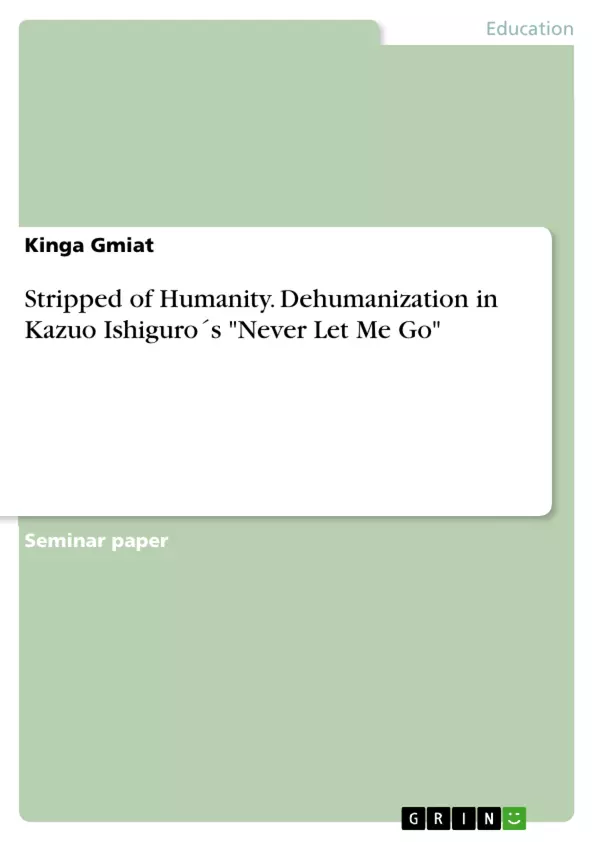The meaning of humanity and dignity becomes more and more essential nowadays and a key concept in our ethical thinking in the world of modern biopolitics, possible future cloning and organ donations. The topic addresses every single one of us, since it deals with our lives and basic human rights.
The Italian philosopher Giorgio Agamben deals with the concept of those, whose human rights are taken away. In his work entitled Homo Sacer. Sovereign Power and Bare Life he presents the concept of a dehumanized protagonist figuring as “homo sacer”, a bad and impure man, whose life is considered to be unworthy. He proposes an idea of this figure, which is still applicable in our modern times. He links this idea ultimately to the concept of sovereignty, to whom homo sacer corresponds and with whom he correlates.
The depiction of this figure and his counterpart, the sovereignty, will be closely looked at and after that Michel Foucault´s definition of biopolitics and the relation to life and death will be given.
Afterwards, we will look at Kazuo Ishiguro´s novel Never Let Me Go, in which these concepts take shape. The novel deals with young students, who are destined to donate their vital organs before they reach middle age. We will analyze the relationship between these students and the figure of homo sacer. The character of sovereignty that comes into existence with the help of the guardians who accompany these students, will also be elaborated. We will focus on these concepts related to biopolitics and figure out, how the characters in Kazuo Ishiguro´s novel are stripped of humanity.
Inhaltsverzeichnis (Table of Contents)
- Introduction
- Dehumanization: denying humanness
- Homo sacer and sovereignty
- Biopolitics: degradation of death
- Kazuo Ishiguro's Never Let Me Go
- The depiction of homines sacri
- The sovereign: a hidden power
- Conclusion: humans or not?
Zielsetzung und Themenschwerpunkte (Objectives and Key Themes)
This essay explores the concept of dehumanization in Kazuo Ishiguro's novel Never Let Me Go, utilizing the theoretical frameworks of Giorgio Agamben's "homo sacer" and Michel Foucault's biopolitics. The primary objective is to analyze how the novel depicts characters stripped of their humanity through mechanisms of social exclusion and control.
- Dehumanization as a denial of humanness, particularly focusing on the concepts of autonomy, civility, dignity, and individuality.
- The figure of "homo sacer" as a representation of those whose lives are considered unworthy, examining the implications of this concept for the novel's characters.
- The role of sovereignty in shaping and controlling human lives, exploring how this power dynamic contributes to dehumanization.
- Biopolitics and the impact of mechanisms that control and degrade human life, especially in relation to death and the body.
- The portrayal of dehumanization in Never Let Me Go, analyzing the relationship between the characters and their treatment as "homines sacri" within the context of the novel's narrative.
Zusammenfassung der Kapitel (Chapter Summaries)
The introductory chapter establishes the essay's focus on dehumanization in the context of modern biopolitics, organ donation, and cloning. The concept of "homo sacer" as presented by Giorgio Agamben is introduced, setting the stage for the analysis of the novel Never Let Me Go.
The second chapter delves into the concept of dehumanization by exploring its relationship to the denial of human qualities such as autonomy, civility, dignity, and individuality. The chapter introduces the idea of "homo sacer" as a figure excluded from both human and divine jurisdiction, emphasizing the ambiguity surrounding this concept.
The third chapter examines the portrayal of "homines sacri" within Kazuo Ishiguro's Never Let Me Go. It analyzes the characters' treatment as those whose lives are considered unworthy of full human rights, exploring the ways in which they are stripped of their agency and autonomy.
Schlüsselwörter (Keywords)
This essay focuses on dehumanization, "homo sacer," biopolitics, sovereignty, Never Let Me Go, Kazuo Ishiguro, organ donation, and the denial of human rights.
- Quote paper
- BA Kinga Gmiat (Author), 2014, Stripped of Humanity. Dehumanization in Kazuo Ishiguro´s "Never Let Me Go", Munich, GRIN Verlag, https://www.grin.com/document/275986



